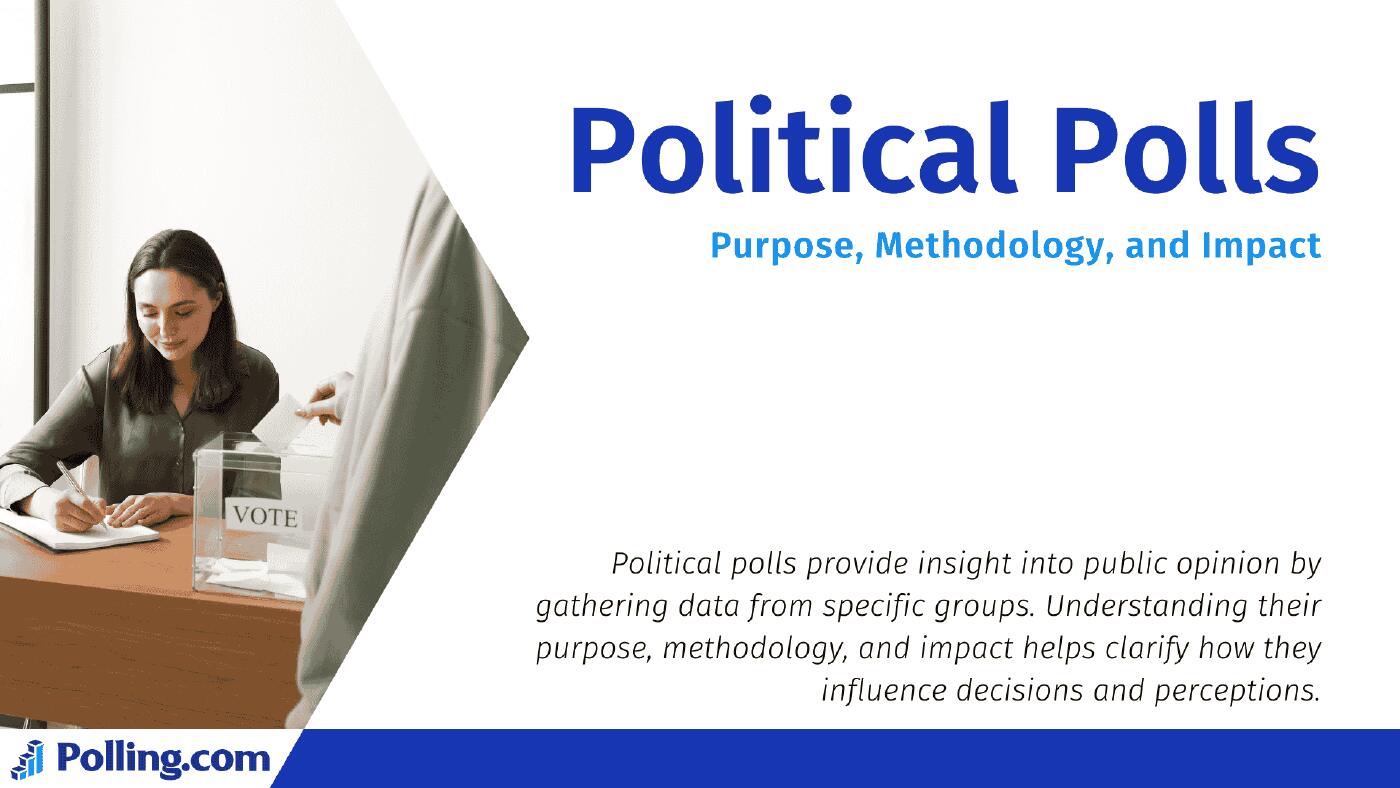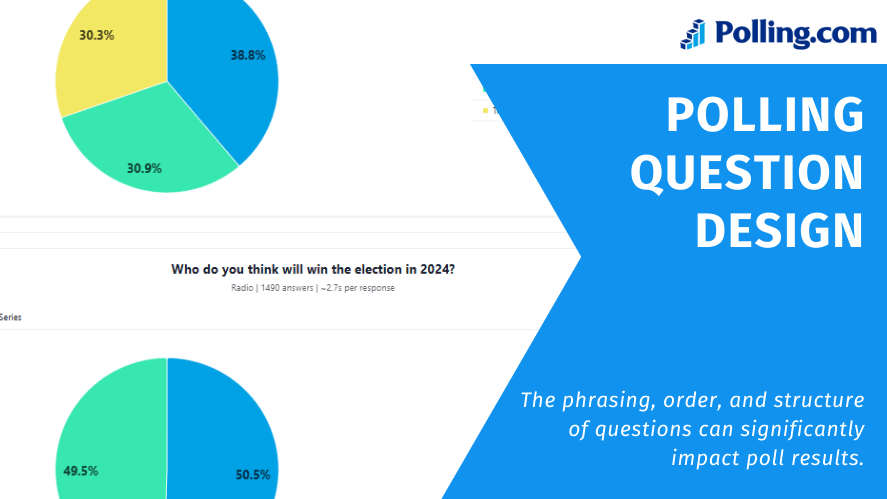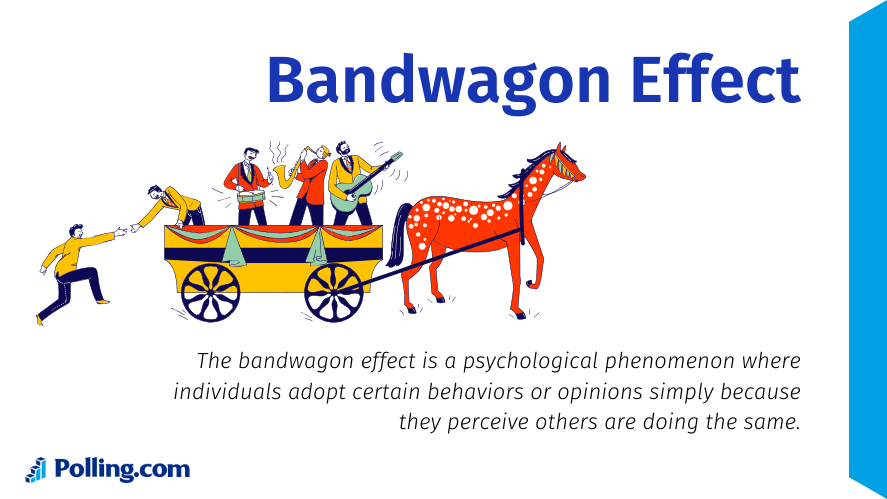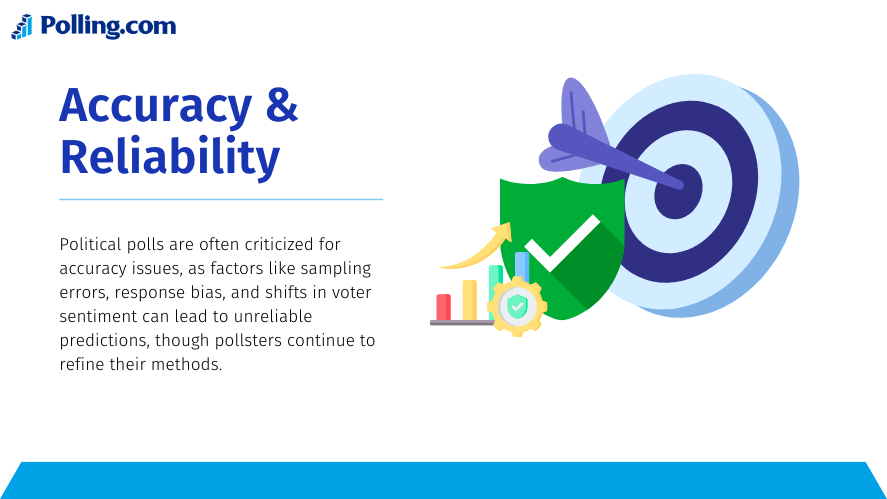
Understanding Political Polls: Purpose, Methodology, and Impact
Have you ever wondered how political pollsters manage to predict voter behavior or election outcomes? Political polls are everywhere during election seasons, shaping news headlines, influencing public opinion, and guiding campaign strategies. But how accurate are these polls, and what do they actually reveal about the political landscape?
In this article, we’ll dive into the world of political polling to understand its purpose, methodology, and impact on society. You’ll learn the answers to questions like how do political polls work, who gets polled in political polls, and are political polls reliable.
By the end, you’ll be equipped to interpret the latest political polls, whether they’re from trusted sources like FiveThirtyEight’s political polls for 2024 or other prominent polling organizations.
Overview of Political Polls
What Are Political Polls?
Political polls are surveys that capture public opinion on political issues, candidates, and elections. They aim to represent the views of a larger population by questioning a smaller, selected group.
Polls can measure voter support for candidates, gauge opinions on policies, or even predict likely election outcomes. For a deeper dive into polling fundamentals, you can check out our Polling Basics.
Why Are Political Polls Significant?
In modern democracies, political polls play a critical role in shaping public discourse and influencing election outcomes. They provide insights into voter sentiment, guide campaign strategies, and impact media coverage.
In the United States, especially during high-stakes election years like 2024, polling data influences not only campaign tactics but also policymaking. However, while polls can be informative, they are not always predictive, as we’ve seen in recent elections.
The Purpose of Political Polls
Understanding Voter Sentiment
Political polls serve as a snapshot of public opinion, revealing how people feel about candidates, policies, and current events.
This information is invaluable for candidates, media, and policymakers alike. Polls indicate which issues are most important to voters, such as healthcare, the economy, or climate change, and show which candidates have the most support.
Guiding Campaign Strategies
Candidates and political parties use polling data to craft campaign strategies. By analyzing polls, they can identify which issues resonate with voters, allowing them to shape messaging and prioritize resources. For example, if polls indicate that younger voters prioritize climate change, a candidate may emphasize environmental policies to attract that demographic.
Additionally, polling data informs resource allocation. Campaigns often focus their efforts on swing states or undecided voters based on polling insights.
In the 2024 election cycle, monitoring sources like FiveThirtyEight’s political polls for 2024 helps campaigns identify crucial trends.
Influencing Media Coverage
Media outlets rely on political polls to report trends and shape narratives. If polls show a particular candidate gaining popularity, the media often adjusts coverage to reflect this, creating a “momentum” narrative. This can impact public perception, as people may start to view certain candidates as frontrunners.
Informing Policymakers
Beyond elections, political polls play an essential role in shaping policy decisions. Policymakers use polling data to gauge public opinion on various issues, allowing them to align their proposals with voter preferences. This feedback loop between government and the public is a cornerstone of democratic policymaking.
Key Methodologies in Political Polling
Sampling Techniques
Sampling is one of the most important aspects of any political poll. The goal is to select a representative group of people who reflect the population as a whole. Common sampling techniques include:
- Random Sampling: In random sampling, every individual in the population has an equal chance of being selected. This method reduces bias and enhances diversity in the sample.
- Stratified Sampling: This approach divides the population into subgroups (such as age, race, and geography) and randomly selects participants from each. Stratified sampling helps ensure key demographics are proportionally represented.
- Quota Sampling: This method involves selecting participants until a predetermined number from each demographic group is reached. Although less random, quota sampling allows for specific demographic balancing.
Survey Methods
Different survey methods come with their own pros and cons:
- Telephone Polling: Historically the most common method, telephone polls involve calling individuals to ask survey questions. However, declining response rates and the shift to cell phones have impacted its reliability.
- Online Surveys: Online polls are increasingly popular due to their cost-effectiveness and larger reach. However, online surveys may suffer from self-selection bias, as only those with internet access and an interest in participating will respond.
- Face-to-Face Interviews: Though rare in large-scale political polling due to logistical challenges, in-person interviews can provide high-quality data for in-depth surveys.
For more on survey methods, read our comprehensive guide on Survey and Polling Methodologies.
Polling Question Design

The phrasing, order, and structure of questions can significantly impact poll results.
Biased or leading questions can skew responses, resulting in data that doesn’t accurately reflect public opinion. Pollsters strive to design questions that are clear, neutral, and straightforward to avoid influencing responses.
Data Collection and Analysis
Data collection and analysis are critical to interpreting poll results accurately. After gathering responses, pollsters apply statistical techniques to analyze the data, often using weighting to adjust for demographic factors like age, gender, and ethnicity. This process ensures that the sample more closely represents the general population.
Margin of Error and Confidence Levels
The margin of error measures how much the poll results might differ from the true population opinion. A smaller margin of error indicates higher reliability.
Confidence levels represent the probability that the results are accurate within the margin of error. For example, a 95% confidence level suggests that 95 out of 100 similar polls would yield results within the stated margin.
To better understand these concepts, see our article on Understanding Poll Accuracy.
The Impact of Political Polls
Shaping Public Opinion

Political polls can influence public opinion by creating a “bandwagon effect,” where people support a candidate simply because they appear popular in polls.
This can lead to increased momentum for certain candidates and influence voter behavior. For example, a candidate leading in the latest political polls may attract more undecided voters.
Impact on Elections
Polling data has a substantial impact on elections, shaping voter turnout, campaign momentum, and candidate strategy. Polls showing a clear frontrunner may discourage supporters of other candidates from voting, believing the outcome is already determined. Additionally, polls influence funding, as donors prefer to support candidates who show strong numbers.
Effect on Political Parties and Candidates
Political parties and candidates closely monitor polling data to make strategic decisions. For example, if polls indicate a candidate is underperforming, they may decide to withdraw from the race.
Strong polling numbers can attract resources and media attention, which can impact campaign success.
Influence on Policy Decisions
Polling data also provides valuable insights for policymakers, helping them align their policies with public opinion. This alignment is essential for maintaining public support, which is crucial for elected representatives in a democratic system.
Media and Public Discourse
Media outlets frequently report on political polls to drive public discourse. By focusing on polling trends, the media shapes the conversation around candidates and issues, influencing public perception. However, an over-reliance on polling can lead to less focus on substantive policy discussions.
Challenges and Criticisms of Political Polls
Accuracy and Reliability Issues

A common criticism of political polls is their accuracy. Factors such as sampling errors, response bias, and unexpected shifts in voter sentiment can lead to inaccurate predictions. Notable polling failures in recent elections have raised questions about reliability, though pollsters are constantly improving their methods to address these issues.
Misinterpretation by the Public and Media
Polls are often misunderstood by the public and media. Concepts like margin of error and confidence levels are sometimes ignored, leading to overconfident interpretations. Misinterpretations can cause shock or disappointment when election outcomes differ from poll predictions.
Ethical Concerns
Ethical concerns in polling include potential manipulation of data, biased question framing, and “push polling,” where questions are designed to influence opinions. Such practices can mislead the public and undermine trust in polling institutions.
Poll Fatigue
The constant barrage of political polls can lead to “poll fatigue,” where the public becomes disengaged or skeptical. In an environment saturated with political data, excessive polling can contribute to public distrust and diminish the impact of credible polls.
Conclusion
Political polls play a pivotal role in democracy, guiding campaign strategies, informing policymaking, and shaping public opinion. However, polls are not without limitations. By understanding how political polls work—particularly their methodologies, challenges, and impact—readers can approach poll results with a more critical eye.
As polling evolves, emerging trends like AI-driven analysis and social media data may reshape the field. For now, it’s crucial for both the public and the media to interpret poll results thoughtfully, recognizing the complexities behind the numbers.
When you see the latest poll results or hear predictions based on FiveThirtyEight’s political polls for 2024, take a moment to consider the methodology behind them. By understanding the process and limitations of political polls, you can form a more informed perspective on their role in shaping our political landscape.
For more insights on polling, visit our homepage at Polling.com or explore more resources on understanding political data.
